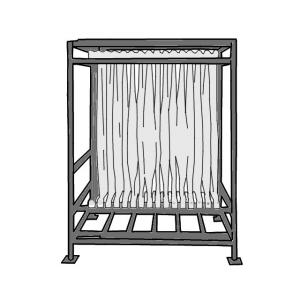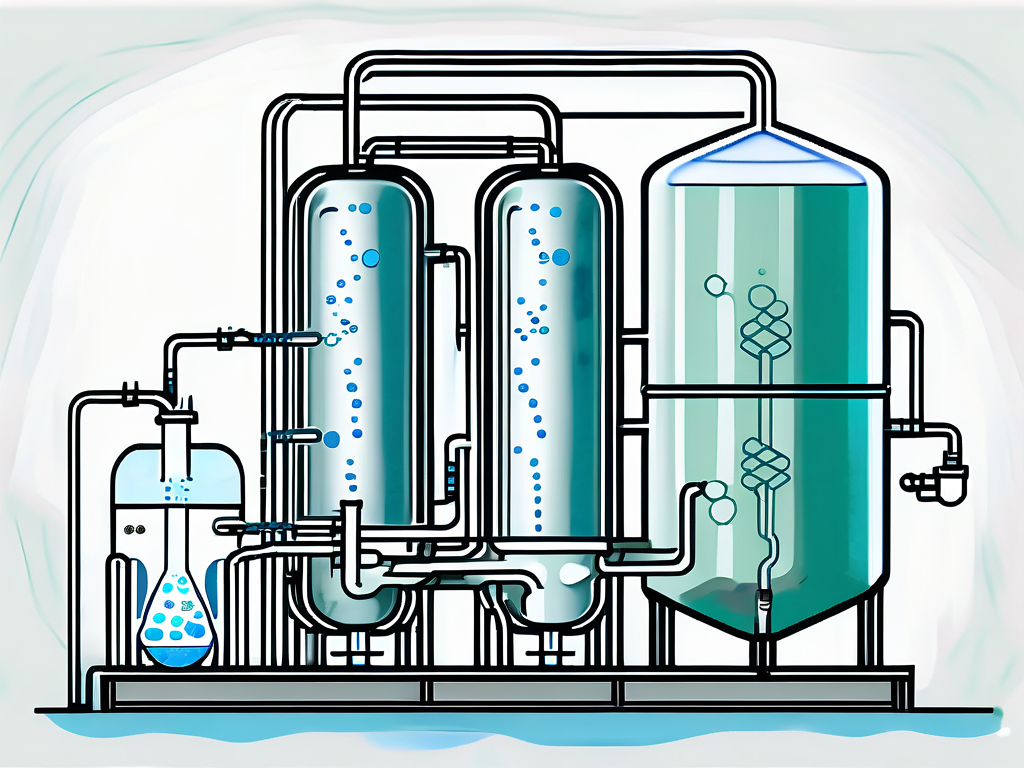Membrane Layer Bioreactors Clarified: Effective Solutions for Tidy Water
Membrane bioreactors (MBRs) have actually emerged as an innovative remedy for addressing the pushing challenges of wastewater therapy - Membrane Bioreactor. By incorporating biological processes with innovative membrane filtering, MBRs not only enhance the high quality of cured water yet additionally reduce the spatial requirements of therapy facilities.

What Are Membrane Bioreactors?
Membrane bioreactors (MBRs) are sophisticated wastewater treatment systems that combine biological degradation procedures with membrane filtration modern technology. This combination enables the reliable elimination of contaminants from water, making MBRs a favored option in various applications, consisting of metropolitan wastewater therapy and commercial effluent management.

One of the vital benefits of MBRs is their capacity to produce top notch effluent, usually appropriate for reuse in irrigation or commercial procedures. Additionally, MBRs call for a smaller impact compared to standard treatment systems, making them excellent for city setups where area may be restricted.
Furthermore, MBRs can properly manage differing influent lots and are much less susceptible to the effects of hazardous shocks. These characteristics add to their growing popularity as a sustainable option for resolving the increasing demand for clean water while minimizing environmental effects.
How Membrane Layer Bioreactors Job
While the procedure of membrane layer bioreactors (MBRs) might appear complicated, it fundamentally revolves around the synergy between organic procedures and membrane filtering. MBRs incorporate an organic therapy process, normally activated sludge, with a membrane separation device to deal with wastewater effectively.
In an MBR system, wastewater is first presented into a bioreactor where microbes deteriorate organic issue and other contaminants. The biological activity decreases the concentration of toxins while promoting the growth of biomass. Following this organic treatment, the combined liquor goes through membrane filtering, which can be microfiltration or ultrafiltration, depending upon the preferred effluent quality.
The membranes act as a physical barrier, enabling water and tiny solutes to pass while keeping put on hold solids and bigger particles. This allows the system to maintain a high concentration of biomass within the reactor, improving the therapy efficiency.
In addition, the continuous separation of treated water from the biomass promotes a small style and reduces the footprint of the therapy center. Generally, the mix of biological destruction and membrane layer purification in MBRs results in reliable and reliable wastewater therapy, making certain high-grade effluent ideal for different applications.
Advantages of MBR Modern Technology
One of the essential advantages of membrane bioreactor (MBR) innovation is its ability to generate high-quality effluent with a considerably decreased impact compared to traditional wastewater therapy approaches. MBR systems efficiently incorporate organic treatment and membrane purification, leading to remarkable removal of impurities, including put on hold solids, pathogens, and natural issue. This capacity results in effluent that typically satisfies or exceeds rigorous regulative criteria for reuse and discharge.
In addition, MBR innovation permits for greater biomass focus, which improves the treatment efficiency and reduces the needed activator volume. This portable layout is particularly valuable in urban areas where area is restricted. The functional adaptability of MBR systems also means they can adapt to varying influent qualities and flow prices, making them suitable for a vast array of applications.
In addition, the lowered sludge manufacturing related to MBR processes contributes to decrease functional click for more info and maintenance costs. The membranes act as a physical obstacle, minimizing the threat of clogging and allowing longer operational durations in between cleaning. Overall, the benefits of MBR modern technology make it an appealing remedy for sustainable wastewater treatment, dealing with both ecological worries and the demand for reliable resource monitoring.
Applications of Membrane Bioreactors
With their convenience and effectiveness, membrane bioreactors (MBRs) discover applications throughout different industries, including metropolitan wastewater treatment, industrial processes, and also water improvement. In municipal setups, MBRs give a compact solution for dealing with wastewater, efficiently getting rid of contaminants while at the same time producing high-grade effluent that meets stringent regulative criteria. This makes them especially ideal for locations with minimal room.
In industrial applications, MBR modern technology is utilized for treating procedure water, specifically in markets such as food and beverage, drugs, and petrochemicals. These industries take advantage of MBRs' capacity to deal with high organic loads and their performance in recovering useful sources from wastewater, such as nutrients and water.
In addition, MBRs play an essential function in water recovery campaigns, enabling the reuse of treated wastewater for watering, commercial procedures, and even as potable water after additional treatment (Membrane Bioreactor). Their efficiency in getting rid of virus and toxins makes them a dependable option for ensuring water explanation quality in numerous reuse applications
Future of Water Treatment Solutions
The future of water therapy options is poised for transformative innovations driven by technical technology and raising ecological understanding. As international water deficiency becomes a pressing issue, brand-new approaches, consisting of membrane layer bioreactor (MBR) my site systems, are established to play a crucial duty in improving the performance and sustainability of water treatment processes.
Arising innovations such as man-made knowledge and device knowing are anticipated to maximize therapy procedures, enabling real-time surveillance and anticipating upkeep. This will improve the overall integrity and performance of water therapy facilities. Developments in membrane products, such as graphene and nanofiltration, guarantee to boost permeation rates and reduce fouling, leading to reduced power intake and operational prices.
In addition, the assimilation of renewable resource resources into water therapy plants will certainly add to greener practices. The circular economic climate model will also acquire grip, urging the healing of useful resources from wastewater, such as nutrients and power.
Final Thought

Membrane bioreactors (MBRs) have actually arised as an innovative service for attending to the pressing difficulties of wastewater treatment. By incorporating biological processes with innovative membrane filtering, MBRs not just enhance the top quality of cured water yet likewise lower the spatial requirements of therapy facilities.One of the essential advantages of membrane layer bioreactor (MBR) technology is its capability to produce premium effluent with a significantly lowered footprint compared to standard wastewater therapy methods.With their versatility and effectiveness, membrane bioreactors (MBRs) discover applications throughout numerous markets, including municipal wastewater therapy, industrial procedures, and even water improvement.In final thought, membrane layer bioreactors stand for a substantial advancement in wastewater treatment technology, integrating organic processes with reliable membrane layer purification to generate top notch effluent.